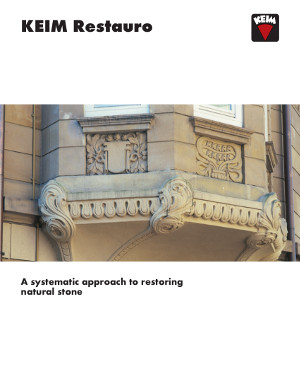Weathering
From time immemorial, sun, wind, rain and frost have been natural factors which act on natural stone and, depending on the type of natural stone, lead to different weathering processes. The onset of industrialization brought with it additional harmful man-made factors.
Weathering processes may fundamentally be divided into three major groups: physical, chemical and biological corrosion.
The essential cause of weathering is most usually water or the harmful salts transported by water.
The various weathering processes or types of corrosion ultimately result in a loss of strength, which may occur in surface zones or also in deeper zones. This results in patterns of damage such as dusting or crumbling, flaking, encrustation, crusting or cracking.
The wide variation in the composition, structure and pore volume of natural stone is reflected in the variety of their weathering processes and profiles. Restoring damaged natural stone requires appropriate materials and methods in order as far as possible to retain and protect the original fabric of the stone and to reproduce its original appearance as well as possible.
Natural stone restoration encompasses a whole range of different measures and processes which may have a preservative, restorative and/or preventive action.

Click above to download the brochure for more information. (PDF)
Consolidation
Stone consolidation is a restorative stone preservation measure. Weathering of natural stone results in an increase in the pore volume in the stone's structure with simultaneous weakening of surface zones.
Targeted addition of binder is intended to reconsolidate the matrix of the building material which has been damaged, i.e. whose mechanical stability has been impaired.
Silicate-based products have long been used successfully for stone consolidation. On reaction with water, they produce silica gel deposits, which have a strengthening action, while simultaneously retaining the capillarity and water vapor permeability of the material being consolidated.
The aim of successful stone consolidation is to recreate the original strength of the material. KEIM's Silex- OH stone consolidation products are accordingly available in two different variants with different gel deposition rates.
If optimum stone consolidation is to be achieved, the weathered zone of the stone must be completely saturated down to the unweathered core, which means that the consolidant is best applied by repeated wet on wet flooding until the material is saturated.